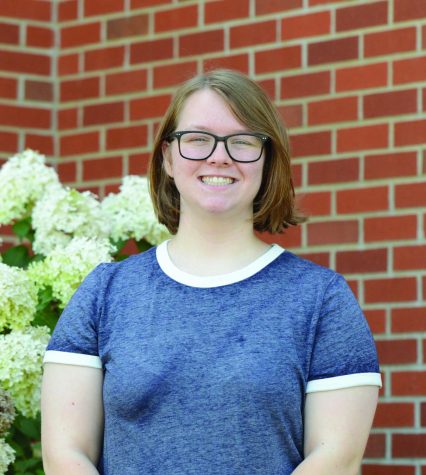SDBOR discusses diversity, consolidations in public meeting
September 24, 2021
Members of the public – including students, faculty and legislators – were able to ask members of the South Dakota Board of Regents about their questions and concerns during an outreach session held on Thursday.
This came after a presentation about the current findings of the Senate Bill 55 task force, a bill introduced in the 2020 legislative session to “examine the possible program and administrative efficiencies and cost effectiveness that may be achieved” through the collective SDBOR universities, according to the bill itself.
The task force is made up of various individuals, including Board of Regents employees, university officials, legislators, CEOS and more.
The meeting was held at 7 p.m. in the Alumni Center and included an introduction from President Barry Dunn, the presentation of the task force’s findings by SDBOR Executive Director Brian Maher and a Q&A session.
One of the main subjects of concern during the Q&A session, especially from students, surrounded the former Office of Diversity, Inclusion, Equity and Access and the future of other similar entities on campus.
“We do not have that office [the diversity office] anymore, but the Multicultural [Center], we absolutely do,” Dunn said when asked if the Multicultural Center would remain. “And other support services, the American Indian Student Center, and Greek Life, you think of this wide range of student success efforts we have on campus, they’re really all staying and are going to be very well supported.”
Instead of diversity offices, the Board of Regents will be instituting an “opportunity center” on campus by Jan. 1, 2022, along with the other five state-run universities.
The centers aim to “provide enhanced opportunity for all students, proudly support the United States of America, safeguard the rich tradition of American universities and offer curriculum that is based upon widely held and accepted knowledge and thought,” according to the Board’s action plan for the policy released back in August.
These opportunity centers are not affiliated with SB 55 and are part of a separate policy implemented by the Board.
“It’s really to take a more holistic look,” Nathan Lukkes, general counsel for SDBOR, said. “We have students coming into our campuses from all walks of life with all kinds of different challenges, constraints, needs, and just making sure that we have … kind of central point where all students can go, and then from there they can be directed, handed off accordingly to the different offices, university departments within the campuses that have the unique services that are needed for that particular student.”
Dunn said that the centers will be serving and recruiting people from all different backgrounds, but as for what will happen until the centers are implemented next semester, there is no sure answer yet.
“It’s a really complicated situation in South Dakota right now, and we need to be honest about that,” Dunn said. “It’s a, again, very tenuous time with some things in South Dakota politically, and we have to be sensitive to that, and be responsive, so that we avoid any negative consequences from some of the positions that have been taken.”
Most other questions pertained to Maher’s presentation of the current recommendations of the task force. These recommendations addressed areas across all six universities that can be streamlined, consolidated and reworked to make higher education in South Dakota as profitable as possible, both economically and academically.
These meetings will eventually end with a final strategic plan for the universities due to the governor by Nov. 15, 2021.
Meredith Redlin, a sociology professor at South Dakota State University, voiced her concern over the task force’s focus on profitability of programs over other, less tangible benefits.
“I’m concerned … that I don’t see any vision for higher education here. I see vocational education, I see an emphasis on professional programs. I don’t see inclusion of larger goals of higher education, and the benefits that those bring, which may not have a simple cost-benefit analysis,” she said.
Maher answered that the task force addressed the business and economic standpoints of these recommendations first and would include more long-term information in their final plan.
“The findings of the task force must be tied to our strategic plan. Our strategic plan wouldn’t be limited to the recommendations you saw here tonight,” he said.
Other recommendations included transitioning to a single nursing program in Rapid City under SDSU’s influence and consolidating departments like human resources and Title IX offices, which will be split into two bodies- a central investigative portion of Title IX cases through the Board, and the individual support sections governed by universities.
Michael Garofalo, a Students’ Association senator for the College of Arts, Humanities and Social Sciences, attending the meeting, said he appreciated the task force and legislators giving perspective on their findings, but was still a little unsure about the opportunity centers and the consolidations of SB 55.
“I do think there’s a lot of unanswered questions … I just think we’ll have to wait, and then from a student government perspective, we’ll have to just weigh the options when it comes time to see what they’re going to implement and how they’re going to do it,” he said.
Senator-at-Large Jonathon Sundet said he thought the meeting was informative and was happy with the accessibility of the meeting to the public.
“I’m not sure if any other opportunity has happened in previous years, so I like the access and transparency the Board is providing,” he said.


























